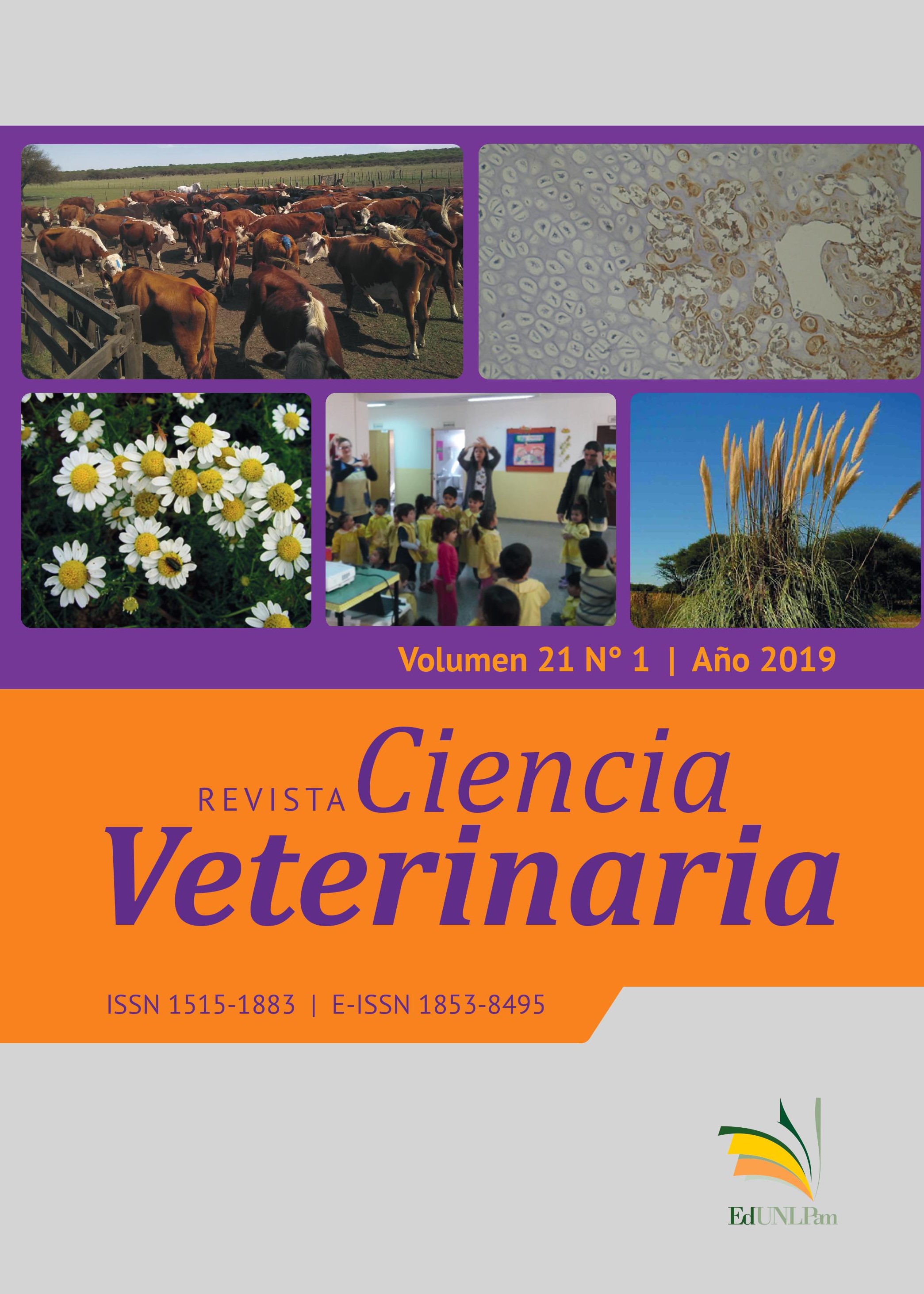Canine dirofilariasis, an emerging parasitism favoured by climate changes
DOI:
https://doi.org/10.19137/cienvet-201921105Keywords:
canine, parasitism, zoonoses, dirofilaria.Abstract
Dirofilaria Immitis is a zoonotic parasitosis produced by a nematode responsible for generating, in infected animals, potentially fatal cardiopulmonary disease. The dirofilariosis occurs in warm areas, with moisture, beeing the mosquito the vector responsible for its transmission. Despite its denomination, it is a mainly pulmonary disease, affecting
the cardiac part in advanced stages. It has different larval stages, but stage L3 is infectious. It enters the host through the vector bite and begins to develop to adult stages which are located at the pulmonary arteries. The main definitive host and reservoir is the dog, but it can affect other wild canids like the fox. The clinical signs range from exercise intolerance, coughing, respiratory crackles and as the parasitic load progresses and increases, hemoptysis or epistaxis, weight loss, syncopes, may occur. In order to arrive at its diagnosis, the detection of microfilariae is essential, whether by taking blood smears from microhematocrit tubes or by the Knott test. Its treatment consists in, the
elimination of the young filariae by the administration of macrocyclic lactones and then the use of an adulticide drug, melarsomine diclohydrate. The climatic changes that have occurred in the last time are of concern due to their propagation towards the north of Patagonia, and
particularly to our province of La Pampa.
Downloads
References
Carretón Gómez E., Falcón Cordón Y., Montoya Alonso J.A. y Garcia Guasch L. Manual de Enfermedades Respiratorias en Animales de Compañía. Gráfica IN-Multimédica S.A. 2016; 305-324.
Vezzani D., Eiras DF., Wisnivesky C. Dirofilariasis in Argentina: Historical review and first report of Dirofilaria immitis in a natural mosquito population. Veterinary Parasitology: 2006; 136:259-273.
Cuervo PF., Rinaldi L., Cringoli G. Modeling the extrinsic incubation of Dirofilaria immitis in South America based on monthly and continuous climatic data. Veterinary Parasitology. 2015; 209:70-75.
Rawlings CA., Calvert CA. Tratado de Medicina Interna Veterinaria. Verminosis cardiaca. 4a ed. Buenos Aires. Argentina: Inter–Médica; 1997.
Kittleson MD., Kienle RD. Medicina cardiovascular de pequeños animales. 2a ed. Barcelona. España: Multimédica; 2000.
PatoVet.com. Perú: Dream Theme [actualizado 22 de Sept 2014; citado 8 de Febrero en 2019]. Disponible en http://patovet.com/o/tag/dirofilaria-immitis/.
Simón F., Siles LM., Morchón R., González Miguel J., Mellado Hernández I. Human and animal dirofilariasis: the emergence of a zoonotic mosaic. emmerging zoonosis. Clin. Microb. Rev. 2012; 25: 507-544.
Calvert CA, Rawlings CA, McCall JW. Canine heartworm disease. I: Fox PR, Sisson D, Moïse NS, eds. Textbook of canine and feline cardiology principles and clinical practice. 2nd ed. Philadelphia: Saunders, 1999:702-26.
Calvert CA, Thrall DE. Treatment of canine heartworm disease coexisting with right- side heart failure. J Am Vet Med Assoc 1982; 180:1201.
Veterinario Perú. VetHelp. Perú: Copyright ©; 2013 [actualizado 2 de May 2013; citado 8 en 2019]. Disponible en: http://www.veterinarias.org/filaria-canina/.
Kittleson MD. Heartworm infestation and disease (Dirofilariasis). In: Kittleson
MD, Kienle RD, eds. Small animal cardiovascular medicine. St.Louis: Mosby, 1998:
-401.
Montoya-Alonso J.A. y Garcia Guasch L. Manual de Enfermedades Respiratorias en Animales de Compañía. Gráfica IN-Multimédica S.A.2016. pp. 305-324.
Carretón E., Morchón R., Montoya-Alonso J. A. Dirofilariosis cardiopulmonar canina. Dirofilariosis. Pautas de manejo clínico. 2012.
McCall J. W., Genchi C., Kramer L. H., Guerrero J., Venco L. Heartworm disease in animals and hu mans. Advances in Parasitology, 2008; 66: 193-285.
Downloads
Published
How to Cite
Issue
Section
License
Al momento de enviar sus contribuciones, los colaboradores deberán declarar , de manera fehaciente, que poseen el permiso del archivo o repositorio donde se obtuvieron los documentos que se anexan al trabajo, cualquiera sea su formato (manuscritos inéditos, imágenes, archivos audiovisuales, etc.), permiso que los autoriza a publicarlos y reproducirlos, liberando a la revista y sus editores de toda responsabilidad o reclamo de terceros , los autores deben adherir a la licencia Creative Commons denominada “Atribución - No Comercial CC BY-NC-SA”, mediante la cual el autor permite copiar, reproducir, distribuir, comunicar públicamente la obra y generar obras derivadas, siempre y cuando se cite y reconozca al autor original. No se permite, sin embargo, utilizar la obra con fines comerciales.







4.png)


7.png)



